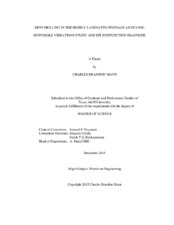| dc.description.abstract | Ultra Petroleum has been drilling in the Pinedale Anticline in Wyoming since 2003. At that point in time, wells could take as much as 75 days to reach target depth. In the first quarter of 2015, Ultra Petroleum, has greatly reduced their spud to target depth time to 9 days. However, despite their drastic improvement in performance over the years, Ultra’s current performance has seemed to have plateaued due to consistently occurring non-productive time on each well resulting from as many as three bit trips to replace damaged drill bits, while drilling the 6 inch production hole. Hours spent tripping in and out of the hole to replace worn drill bits is extremely costly. In the third quarter of 2014, Ultra in an effort to improve performance, began a concerted effort to target this problem area and improve performance. After training Ultra Petroleum personnel on a physics-based, continuous improvement set of practices, Ultra Petroleum’s performance increased significantly. In addition to the training, Ultra Petroleum and Texas A&M University examined their operations performance and practices using downhole drilling dynamics data. After the analysis, suggestions were made for engineering redesign possibilities. The objective of this study is to determine the in-situ dynamics state of the bottom hole assembly and drill bit, and how this excited vibrational state contributes to the bit damage seen from the drill bits pulled out of the well. This thesis will document that students work and findings. In order to accomplish this goal downhole dynamics measurements were studied to determine the specific vibrations present in the drilling of these wells. In addition these measurements were used to determining the severity of each vibration type and the effectiveness of specific drilling equipment at mitigating their negative effects on performance and tool life. Meaningful results were obtained from the downhole dynamics measurements that provide both knowledge to the operator and suggestions for ways to improve performance and tool life, and include conclusions regarding the effectiveness of roller reamers and depth of cut control bits in reducing torsional oscillation, the effectiveness of full-gauge stabilization and extended gauge bits at reducing lateral vibrations, and hypotheses about the effectiveness of incorporating some specific tools and techniques for performance improvement. | en |


